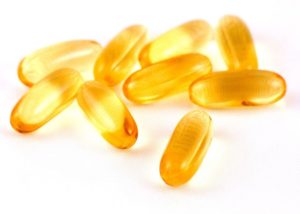 The following study raises the question of how to lower BPA levels in all people, not just children with autism spectrum disorder.
The following study raises the question of how to lower BPA levels in all people, not just children with autism spectrum disorder.
The absolute quickest and easiest is to buy (whenever possible) loose foods (fresh fruits, vegetables, breads, etc) or foods in glass containers (and not plastic bottles, jars, or containers), store food in glass, porcelain, or stainless steel containers, and microwave in glass dishes (and not plastic containers).
In other words, think glass and not plastic. This is because BPA is in polycarbonate containers or packaging.
Lower your use of canned foods and avoid soda in cans. This is because cans have a lining that contains BPA or a BPA substitute (and research suggests it has the same effects as BPA). By the way, clear cling wrap made from polyethylene is considered safe to wrap and store food in.
From Medical Express: New study links BPA exposure to autism spectrum disorder
A newly published study is the first to report an association between bisphenol-A (BPA), a common plasticizer used in a variety of consumer food and beverage containers, with autism spectrum disorder (ASD) in children. The study, by researchers at Rowan University School of Osteopathic Medicine (RowanSOM) and Rutgers New Jersey Medical School (NJMS), shows that BPA is not metabolized well in children with ASD. The research appears online in Autism Research.
"It has been suspected for a lot of years that BPA is involved in autism, but there was no direct evidence," said T. Peter Stein, of RowanSOM and the study's lead author. "We've shown there is a link. The metabolism of BPA is different in some children with autism than it is in otherwise healthy children."
The research team – which included Margaret Schluter and Robert Steer, of RowanSOM who were responsible for laboratory analysis, and child neurologist Xue Ming, of NJMS who recruited and ascertained the study populations – examined urine specimens from 46 children with ASD and 52 healthy control children for both free BPA and total BPA concentrations.
Like many chemicals, BPA becomes water soluble when it is bound to glucose in the liver – a process called glucuronidation. Conversion to a glucuronide and then excretion of the glucuronide in the urine is a major pathway for removing toxins from the body.
The researchers also conducted a metabolomic analysis to screen for all the chemicals found in the children's urine. The metabolomics analyses showed the mean number of statistically significant correlations between metabolites detected and total BPA excreted to be approximately three times greater with the ASD group than the controls, and the number of statistical significant correlations with fraction of BPA bound was approximately 15 times higher in the children with ASD (p<0.001).
"Other studies involving rodent data have shown that BPA functions as an endocrine disruptor, but ours is the first to show this in humans and the first to associate it to autism," Stein said. "The observations show that for some children there was a relationship between intermediary metabolism, the ability to conjugate BPA and symptoms of autism."
Although the study involves a relatively small number of subjects, Stein said, "The key point is that the study seems to link BPA to autism and creates an open area for further research. One implication of our study is that there might be a benefit to reducing BPA exposure for pregnant women and for children with autism."


 Two years ago
Two years ago  For years it has been known that most children with autism spectrum disorder (ASD) have all sorts of gastrointestinal (GI) problems (e.g., constipation, diarrhea, stomach pain, food intolerance), and the more severe the autism, the more severe the GI problems. Recent studies suggested that a major factor in this are abnormal gut bacteria, with the gut microbial community out of whack (dysbiosis). Previous studies looking at the
For years it has been known that most children with autism spectrum disorder (ASD) have all sorts of gastrointestinal (GI) problems (e.g., constipation, diarrhea, stomach pain, food intolerance), and the more severe the autism, the more severe the GI problems. Recent studies suggested that a major factor in this are abnormal gut bacteria, with the gut microbial community out of whack (dysbiosis). Previous studies looking at the  A big concern nowadays is why some children develop autism, specifically autism spectrum disorder (ASD). Autism spectrum disorder is considered a life-long neurodevelopmental disorder that is thought to affect 1 out of 68 American children. While the causes of ASD are unknown in most cases, some studies report an association (higher risk) between a pregnant woman's infections and fever during pregnancy and risk of ASD in the baby, while other studies don't find such an association. Some studies also looked at the
A big concern nowadays is why some children develop autism, specifically autism spectrum disorder (ASD). Autism spectrum disorder is considered a life-long neurodevelopmental disorder that is thought to affect 1 out of 68 American children. While the causes of ASD are unknown in most cases, some studies report an association (higher risk) between a pregnant woman's infections and fever during pregnancy and risk of ASD in the baby, while other studies don't find such an association. Some studies also looked at the  This study found impressive results - improvement in autistic behaviors in children diagnosed with autism spectrum disorder (ASD) with four months of daily vitamin D supplementation. Children in the
This study found impressive results - improvement in autistic behaviors in children diagnosed with autism spectrum disorder (ASD) with four months of daily vitamin D supplementation. Children in the